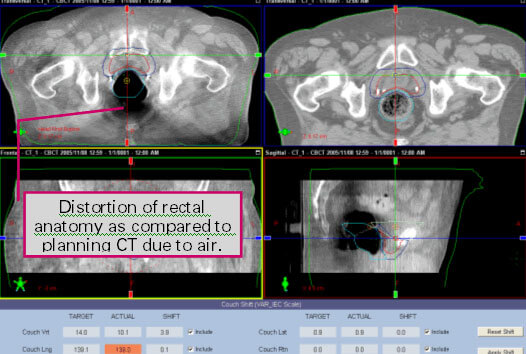With IGRT technology, doctors can not only increase precision, they can deliver higher doses of radiation to smaller areas and more effectively treat tumors or cancer cells.
Dynamic Tumor Tracking
Tumors are not stationary, unchanging targets; they move between and during treatments. IGRT uses daily CT scanning to create three-dimensional images that pinpoint the exact size, location and coordinates of the tumor. In the past, oncologists have had to compensate for tumor movements by making the radiation beam larger, exposing a significant volume of healthy tissue to radiation. With IGRT, two robotically controlled “arms” capture CT, fluoroscopic and x-ray images on a daily basis, pinpointing the exact position of the cancer just prior to treatment. This increased precision allows for more powerful beams of radiation resulting in higher cure rates.



Maximize Effectiveness. Minimize Risk.
Clinical studies have indicated that higher doses of radiation significantly improve local tumor control. Using daily CT guidance, we can track the position of normal tissue structures to significantly reduce the rate of normal tissue complications. For example, in the treatment of prostate cancer, radiation can be focused to minimize exposure to the rectum and bladder. Additionally, the radiation dose to the penile bulb can be minimized for potency preservation.

